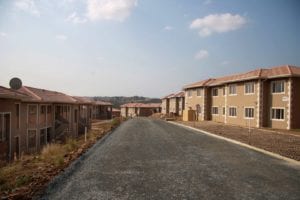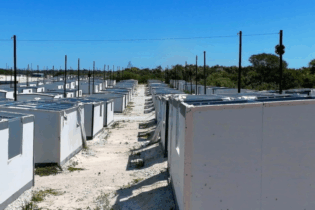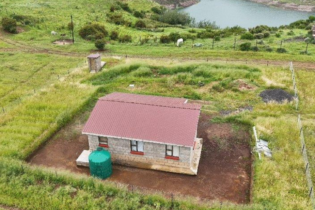Prudent sourcing and selection of building materials and fittings and fixtures has delivered Lakehaven Phase 2, a ground breaking social housing project.
Lakehaven Phase 2 is Durban’s third greenfields project. Its Phase 1 predecessor received the coveted Social Housing Project of the year 2011 award from the Southern African Housing Foundation (SAHF). “Lakehaven Phase 2 takes this a step further. Through the far sighted substitution of cheaper building materials with higher quality building materials, First Metro Housing and construction, cost and project managers HDH have as good as redefined social housing and made it aspirational,” explains Dirk Meyer, managing director of Corobrik. Building Lakehaven Lakehaven Phase 1 comprises 312 units, while the second phase provides a further 280 units within 34 double story blocks of flats. Construction began in early 2013 and it is on track for completion by mid-year, with the first 88 units already occupied. All upgrades were facilitated well within strict budgetary constraints and to meet strict objectives outlined by government. Mehmood Hoosen, HDH’s principal agent, pointed out that, while costs were kept low, the end product was of a high standard to the point where Lakehaven Phase 2 had definitely added value to the area. Delivering quality Hoosen says that his company worked within strict parameters but had enjoyed a great deal of flexibility when it came to overall design and choice of materials. “We may have started with a blank page, but it was not straight forward. We put a project team together and then workshopped in terms of finishes. It was about finding the best products for the development.” Hoosen explains that the objective was to deliver a quality project through an improved choice of materials and top notch workmanship.In line with capital subsidies provided through the Institutional Subsidy and the Capital Restructuring Grant, social housing developments must adhere to strict principles that extend beyond construction.
Government policy calls for the integrated provision of services which involve the inclusion of social facilities in a location that is close to both cultural amenities and work opportunities. This approach also provides for better spatial planning and greening of the environment. Going green In additional to aesthetic considerations, Hoosen pointed out that environmental concerns are top of the First Metro Housing (Lakehaven’s developer) agenda. In line with these, greening of the environment and the planting of trees as well as the selection of building materials with low carbon footprints was important. These included Corobrik’s Country Cottage face bricks, clay Ironstone pavers and Geolok 400 retaining blocks. Facebrick was used instead of stainless steel for balustrades. Aprons around the building were redesigned so that the vibrant colours of the Ironstone pavers could be introduced in place of concrete while Corobrik Geolock earth retaining blocks provided for a practical and attractive landscaping throughout the complex. “These products will last longer and are more sustainable. When we build, we also need to look at the aesthetics as well as how we will impact on the environment. This is the first time we have gone this route and our client is happy with the outcome,” says Hoosen. Looking to the future Hoosen says that, going forward, HDH would take a similar approach when selecting materials for future social housing projects as well as the approach construction process itself.







